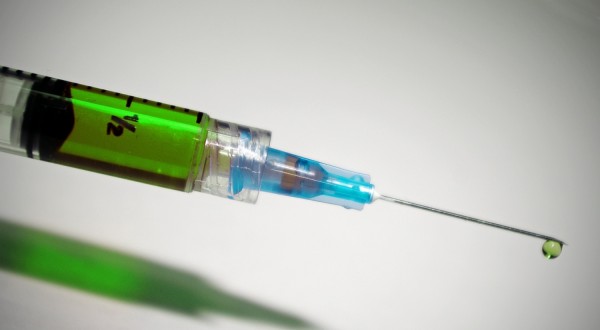Chemo and Immunotherapy Combine with Biomaterial Based Cancer Vaccine in Treating Triple-Negative Breast Cancer in Mice
In the present, different procedures in treating cancer are available for the patients, but each of them has a side effect. According to Wyss Institute, Chemotherapy quickly kills dividing cancer cells. However, it also damages the healthy cells present in the body and frequently does not effectively prevent tumor spread or disease recurrence. They added that immunotherapy avoids these problems by stimulating the immune system in doing an anti-cancer response. However, the immune system is having a hard time accessing tumors because of the local immunosuppressive environment, the tumors emit.

ALSO READ: New Drug Testing Approach for Pancreatic Cancer via the 'Time Machine' Discovered
A study published in nature communications shows the cancer-killing effect of chemotherapy and the long term effectiveness of immunotherapy are combined into a biomaterial-based cancer vaccine that can be injected adjacent to the tumor site. According to the study, Triple Negative Breast Cancers (TNBCs) are resistant to current immunotherapies, partly because of the difficulty of reprogramming the highly immunosuppressive tumors microenvironment (TME).
When the biomaterial-based cancer vaccine was given to a mouse model with aggressive triple-negative breast cancer, 100% of them survived succeeding injections of cancer cells without relapsing.
In a release by Wyss Institute, co-first author of the study and assistant professor in the Department of Materials Science and Engineering at the University of Illinois, Hua Wang, Ph.D., triple-negative breast cancer does not kindle strong feedbacks from the immune system and immunotherapies are unsuccessful in treating the disease. He furthered that immunotherapy attracts abundant immune cells to the tumor while chemotherapy produces a hefty amount of dead cancer cells that the immune cells can pick up and utilize to produce an effective tumor-specific response.
READ ALSO: Research Finds HDA6 That Can Control Growth of Tumor and Stop It From Metastasizing
Cancer Vaccines
According to Harvard Wyss Institute, therapeutic cancer vaccines available in the present necessitate doctors to remove the patient's immune cells from the body then reorient and introduce them back to the body. First developed in 2009, the institute's initial approach uses a small disk-like sponge made from Food and Drug Administration (FDA) approved polymer. Wyss Institute mentioned that the cancer injection had performed well in treating multiple types of cancer in mice and has been explored in clinical trials for treating melanoma at Dana Farber Cancer Institute.
Co-first author and alumni of Wyss Core faculty member David Mooney, Alex Najibi said that one of the critical limiting factors in the development of cancer vaccines is the selection of tumor-associated antigens (TAAs) because there is only a little knowledge available on the known antigens for a few specific tumor cell lines. He added that embedding the chemotherapy drugs inside the vaccine scaffold makes a burst of cancer cell death that releases TAAs directly from the tumor to the dendritic cells, detouring the long and costly antigen progress.
According to Wyss Institute Founding Director, Donald Ingber, M.D., Ph.D., said that the newest version of the researcher's cancer vaccine is a fresh and multifunctional anti-cancer therapy that offers new hope for the treatment of a wide range of cancers.
READ NEXT: Neoantigens Show Potential in Cancer Treatment, Says Study
Check out more news and information on Cancer on MD News Daily.
Nov 11, 2020 08:00 AM EST





